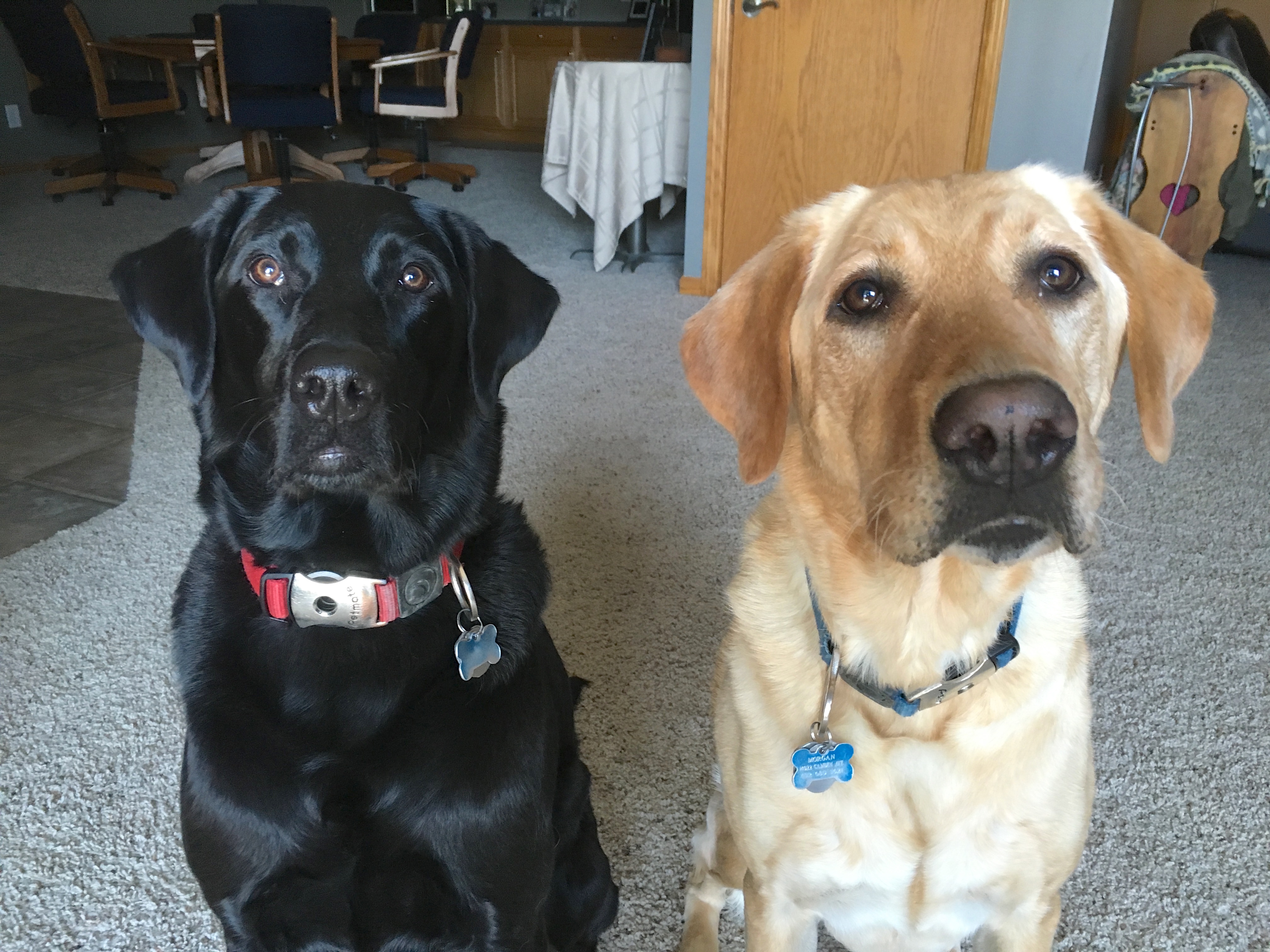Training a Pair of Lab Sisters to Calm Down and Listen to their Guardians
By: David Codr
Published Date: May 8, 2016
Tiki (left) and Morgan are a pair of four-year-old Lab sisters who get excited and bark a lot when people arrive, pull on the leash and are very reactive to dogs passing by their back yard fence.
When you have siblings from the same litter that live together, it’s not unusual for them to compete or try to one up one another in various activities and behaviors.
While this sibling rivalry was certainly a factor for Tiki and Morgan, I spotted in interaction between their guardian and the dogs that most likely was the biggest contributing factor towards their behavior during my arrival.
It’s important to remember that anytime we are petting our dogs, we are reinforcing whatever state of mind they are in at the time.
While the dog’s guardian was attempting to soothe Morgan, her interaction was actually nurturing this unbalanced state of mind. Because the dog’s guardians have been attempting to placate or soothe the dogs from their unbalanced state this way, it’s going to take a little bit of time to undo things.
But the good news is, dogs live in the now. If the members of the family can refrain from petting their dogs in these over excited states, it should;t take long for them to change into a more desirable behavior.
I also suggested that the guardians adopt my Petting with a purpose technique. This involves asking the dog to sit or lay down first, then only petting the dog after they comply to reward their compliance. By asking the dogs to do something before they receive attention or affection from humans, the dog’s guardians can help redefine the leader follower dynamic in the house without much effort.
I also noticed that whenever anyone was petting one of the dogs, the other dog immediately came over and tried to force their way in between human and the dog they were petting. This is obviously a jealous behavior and is also indicative of the dogs thinking that they can tell the human what to do.
To help change this dynamic, I went over a technique that I have developed that trains the dogs to compete to be obedient.
Most dog guardians don’t have the time to take their pet to dog school each week. This is why I look for opportunities to turn everyday, recurring activities into mini dog behavior training sessions. By making small changes to how the dog’s guardian’s interact with their charges, they unintentionally do little dog training session throughout the day, every day.
A great example of this type of dog training is how I trained with the dogs to stop and wait for their guardians at the top or the bottom of the staircase rather than rushing past them.
For dog’s, whoever is in front is literally seen as being in a leadership position. By simply asking the dogs to stop and wait for the humans to pass first, the dog’s guardian’s can incorporate this easy dog behavior training each time they go up or down the stairs.
I also suggested that the guardians incorporate a number of new rules and boundaries and showed them how to enforce them with good timing. Each time that the guardians correct the dog for breaking the rules, they participate in one of these mini dog behavior training sessions.
The more the dog identifies as being in a follower position, the more respect they will show their guardians. The more the dogs respect them, the more responsive their will be when asked to follow commands or corrections.
To help the guardians stop dog barking at the door, I went over a set of escalating consequences that I like to incorporate any time a dog is engaging in an activity or behavior that I disagree with.
After going through the escalating consequences and demonstrating how the guardian can use them to claim the space around the door, the other guardian stepped back outside so that he could play the part of arriving guest again. But this time I coached the other guardian through answering the door herself.
Because security for the pack is generally handled by the senior ranking dog, having the humans take control of this activity is going to go a long ways towards diminishing Morgan’s barking and Tiki’s overexcitement.
By the end of the session, Morgan was much more balanced and was retaining a calm energy. She had stopped pacing around the room and hadn’t barked in quite a while.
Tiki is absolutely the more confident of the two dogs, so we primarily worked on helping her develop more respect for her guardian’s authority.
Now that the dog’s guardians know not to pet their dogs when they are in an excited, anxious, fearful or otherwise unbalanced state of mind, the rules and structure that we introduced will be able to start transforming the dogs into more of a follower’s mindset.
Once the dogs identify as being in a follower position, the reactivity out in the backyard should diminish greatly as should Morgan’s overall anxiety. There’s a lot of stress that comes with being in a leadership position. Now that the dogs guardians are assuming this role in their dog’s eyes, both dogs will be able to relax and leave sweating the details up to the humans.
Categorized in: Dog Behavior


